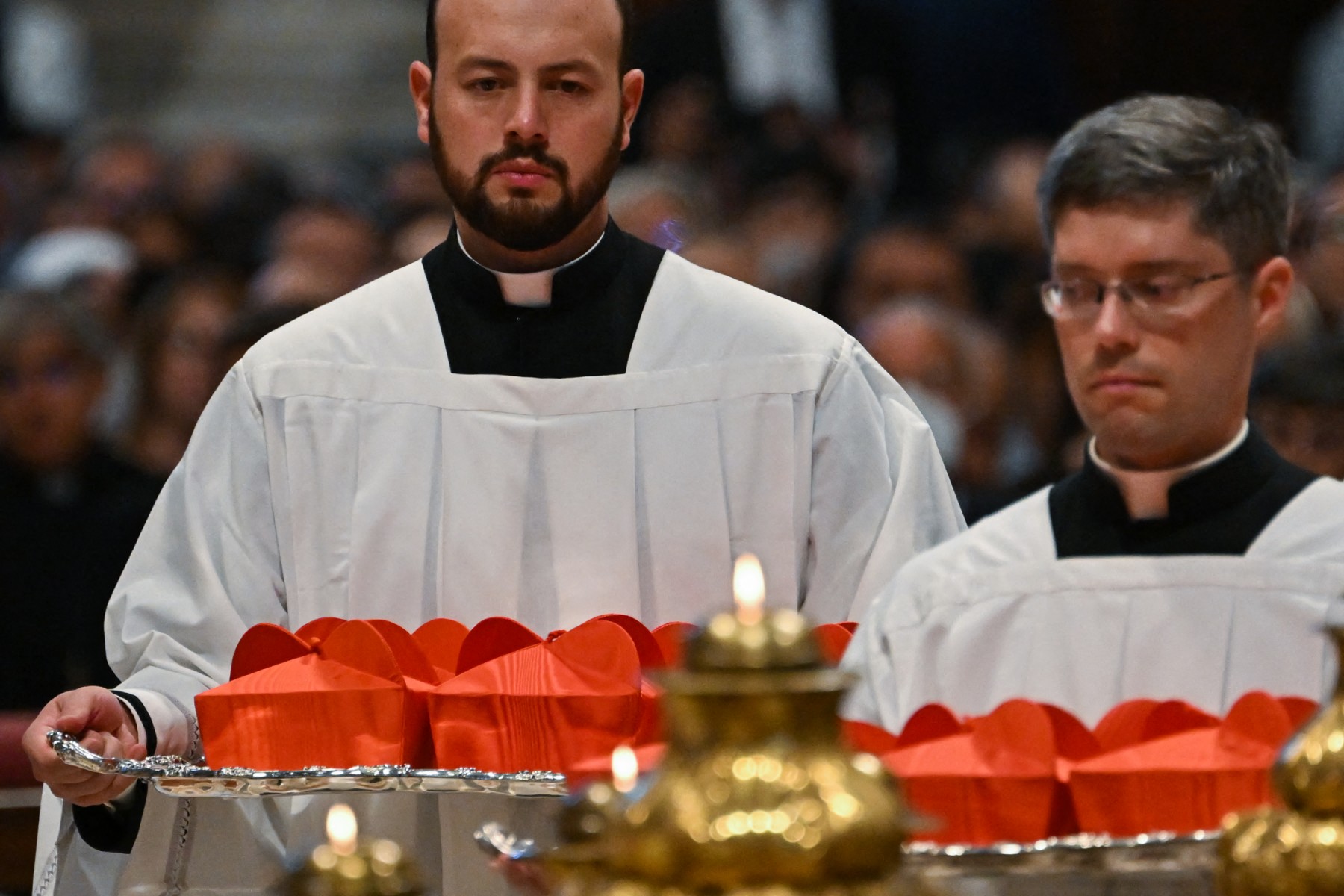Pope Francis is set to create 21 new cardinals from around the world on Saturday, most of whom will one day be eligible to elect his successor — or become pontiff.
The ceremony, called a consistory, is the ninth of Francis’ pontificate since his election in 2013.
It will be closely watched for clues as to the future direction of the Church, especially since the 86-year-old pope has said he would not be averse to stepping down — as did his predecessor Benedict XVI — should his declining health warrant it.
Pomp and circumstance
The ceremony will be held Saturday morning at 10:00 am (08:00 GMT) in St. Peter’s Square.
Of the 21 cardinals-to-be, 18 are under the age of 80 and thus currently eligible to vote as “cardinal electors” in the next conclave, when Francis’ successor will be determined.
As is customary, the future cardinals will kneel before the pope to receive their biretta, or four-cornered scarlet cap, whose colour recalls the blood of Christ shed on the cross.
Francis will also present each with the cardinal’s ring, which replaces the episcopal ring they receive as bishops.
The ceremony will be followed by the traditional “courtesy visit” in which the general public is invited inside the gilded halls of the Apostolic Palace to greet the newly made cardinals.
‘Princes of the Church’
Long considered the “princes” of the Roman Catholic Church, cardinals serve as top administrators and advisers to the pope.
Some lead departments within the Roman Curia, the government of the Holy See, but most work from their home countries.
Among the new group of cardinals are clergy from two geopolitically sensitive areas: the Latin Patriarch of Jerusalem, who is the Holy Land’s top Catholic, and the bishop of Hong Kong, who will be key in improving the Church’s fraught ties with communist China.
Some of the future cardinals already hold top positions in the Curia, namely the prefect for the Dicastery of the Eastern Churches, the head of the powerful Dicastery for the Doctrine of the Faith, and the head of the Dicastery for Bishops.
Do the math
Following the consistory, there will be 137 cardinal electors. About three-quarters of these, or 99 cardinals, will have been appointed by Francis, the former Jorge Bergoglio.
That has increased scrutiny of Francis’ picks, with some Vatican observers viewing the list as an indication of the future spiritual roadmap of the Church.
During his papacy, Francis — the first pope from the Americas — has sought to elevate to the highest ranks of the Church clergy from developing nations far from Rome, part of his philosophy of diversity and inclusion.
That has heightened speculation that the next pope may well be cast in the same mould as Francis, preaching a more tolerant Church with a greater focus on the poor and marginalised.
Of the cardinal electors, 21 percent were created by Benedict XVI and six percent by John Paul II.
Far from Rome
The Jesuit pontiff, who has championed the faithful from “peripheries” far from Rome, also wants cardinals to reflect the “universality of the Church”, looking to areas where Christianity is growing, such as Latin America, Africa and Asia.
From the Americas, Francis has chosen archbishops from Venezuela and Argentina for Saturday’s consistory, as well as a 96-year-old Capuchin priest from Buenos Aires.
From Africa come archbishops from South Sudan, South Africa and Tanzania, while the clergy from Asia hail from Malaysia and Hong Kong, including the city’s current bishop Stephen Chow.
Earlier this month, Chow travelled to Mongolia during a papal visit by Francis in which the pope sought to reassure China’s communist government that the Church had “no political agenda to advance”.
Europe still plays role
Clergy from Europe, where Catholicism is steadily declining, will still be represented, however.
New cardinals include the Swiss prelate serving as the Holy See’s apostolic nuncio to Italy, equivalent to an ambassador, and the archbishops of Lodz in Poland and Madrid, Spain, and the bishop of Ajaccio, Corsica.
Youngest is the 49-year-old bishop of Setubal, Portugal, who most recently organised World Youth Day in Lisbon. Americo Aguiar will be the College of Cardinals’ second-youngest member, just behind the apostolic prefect of Ulaanbaatar, Mongolia, Giorgio Marengo.







